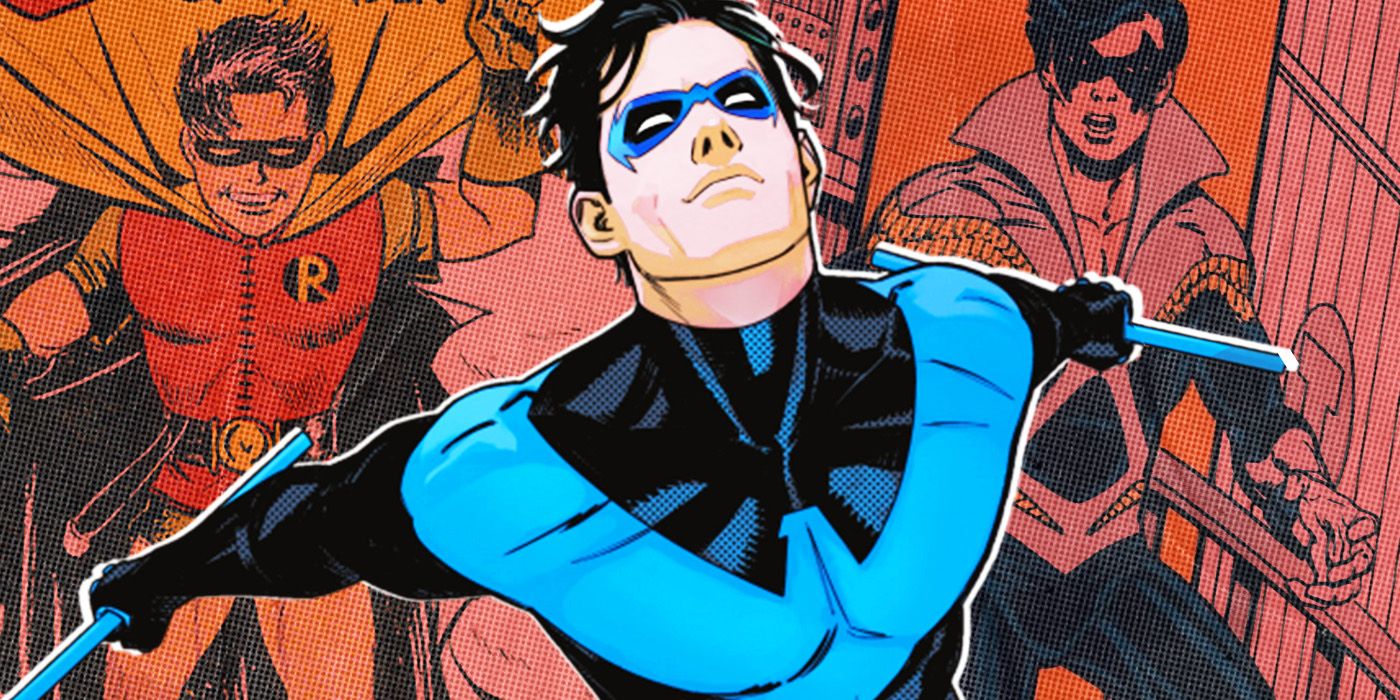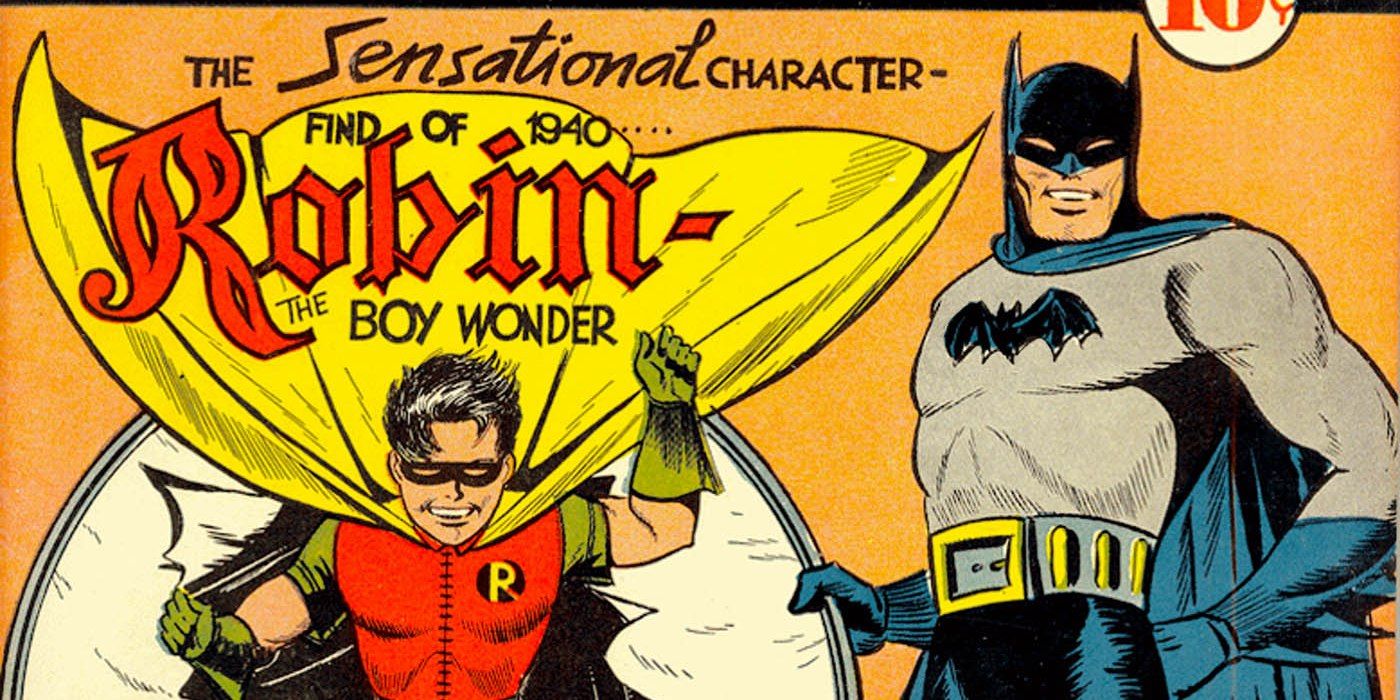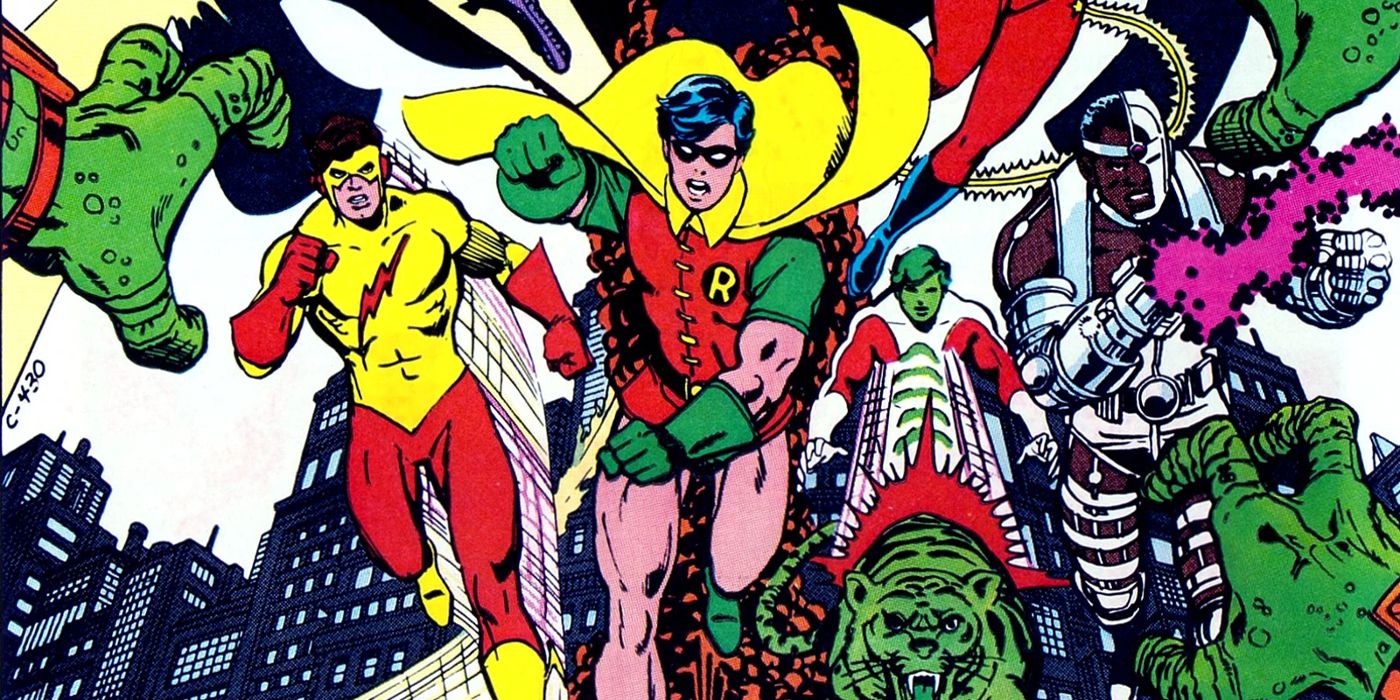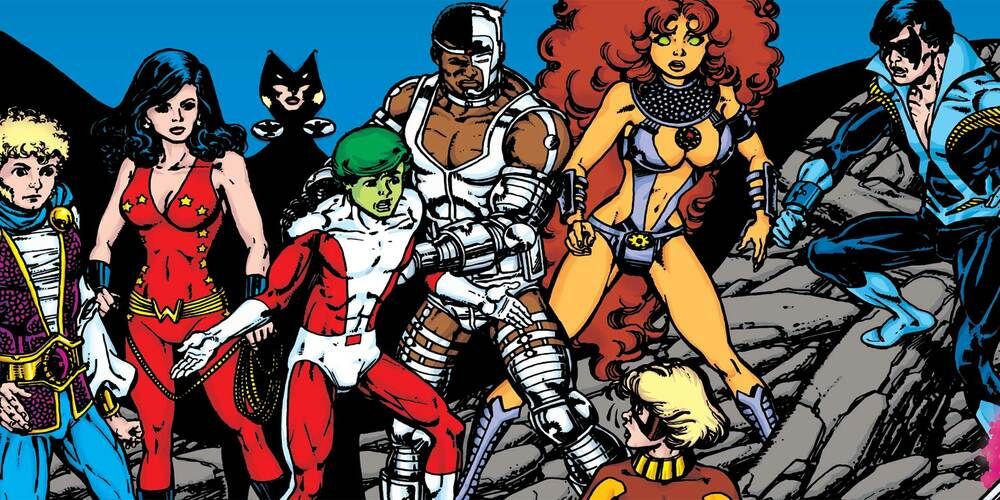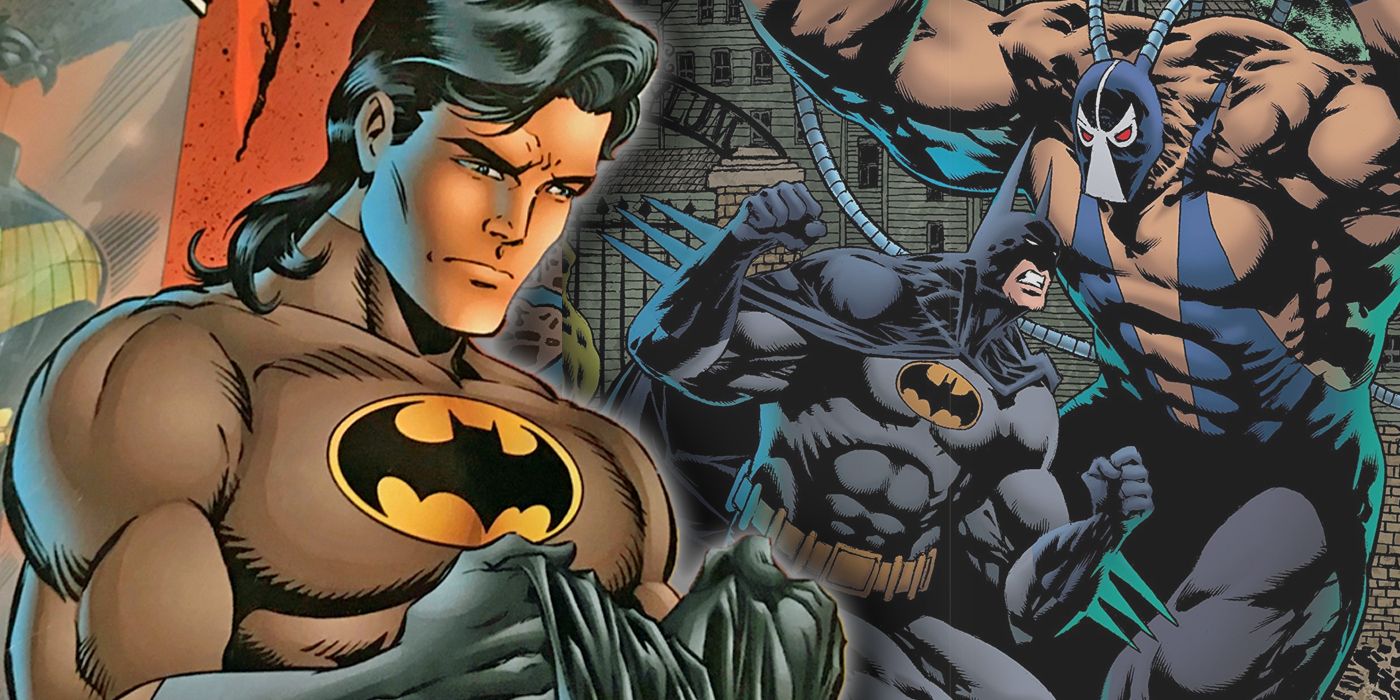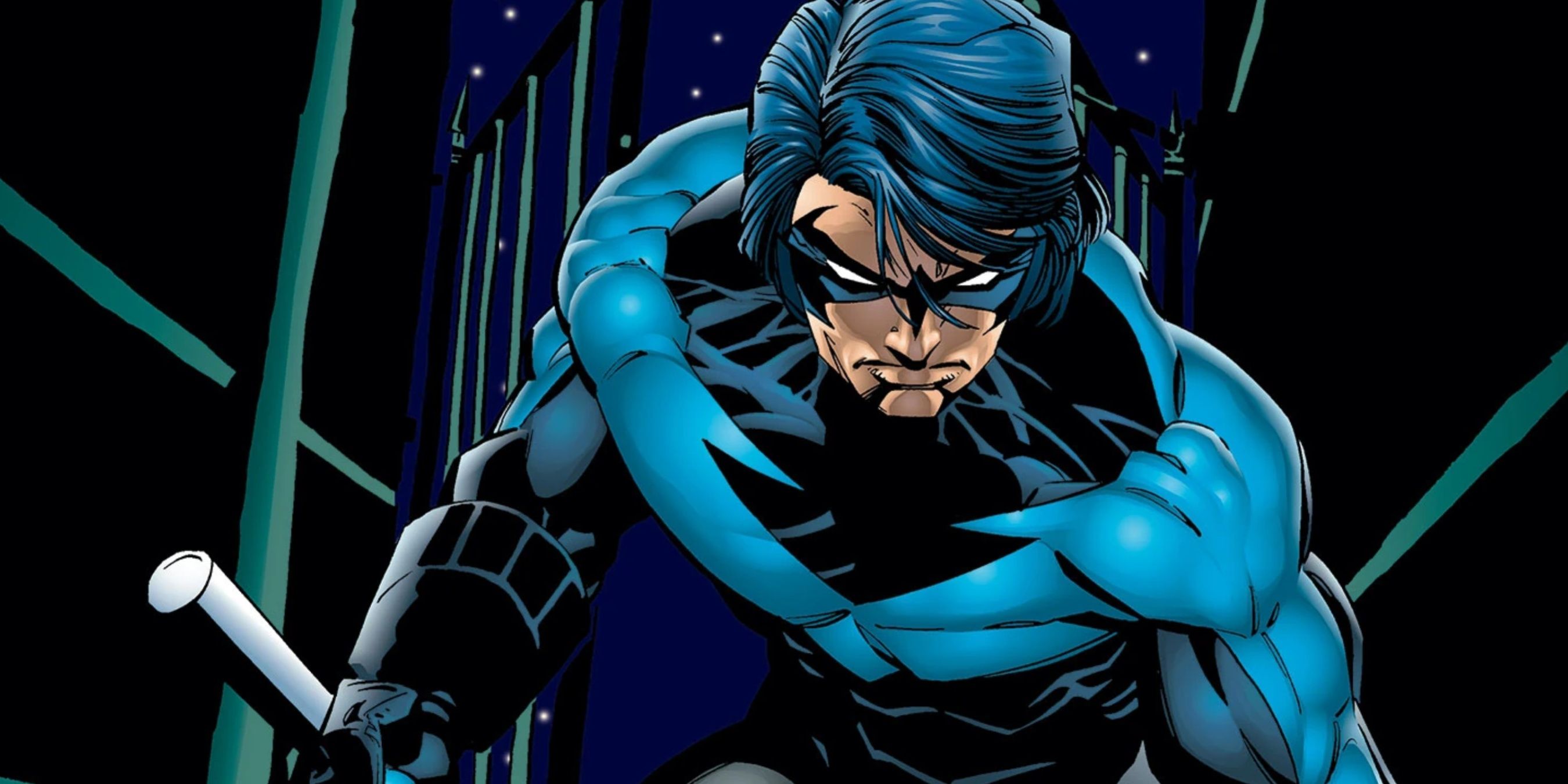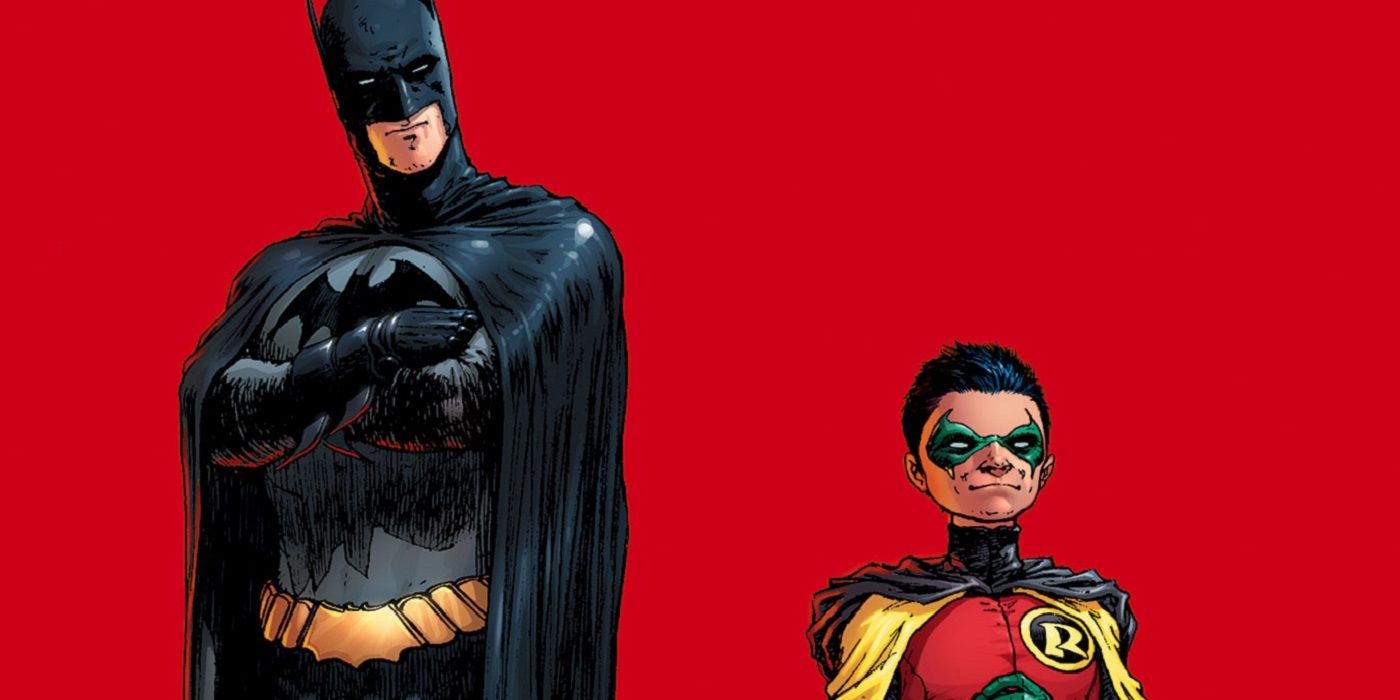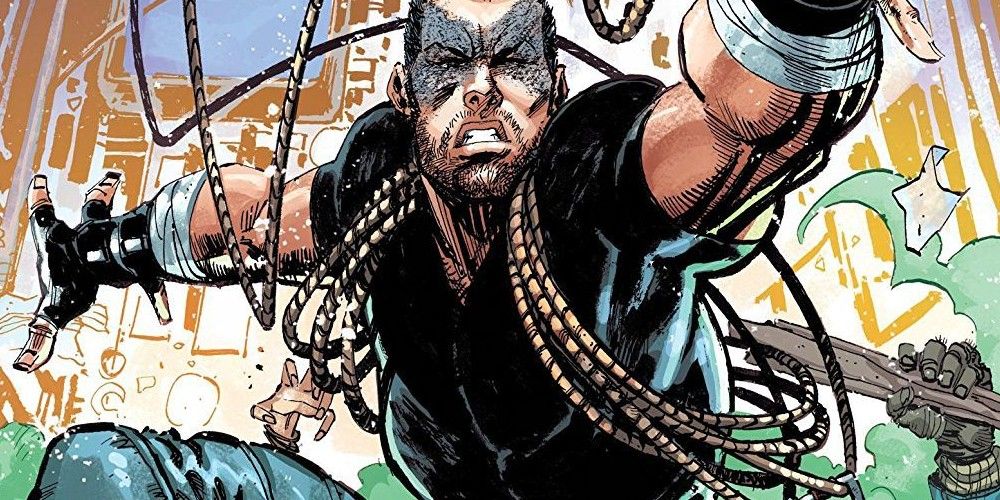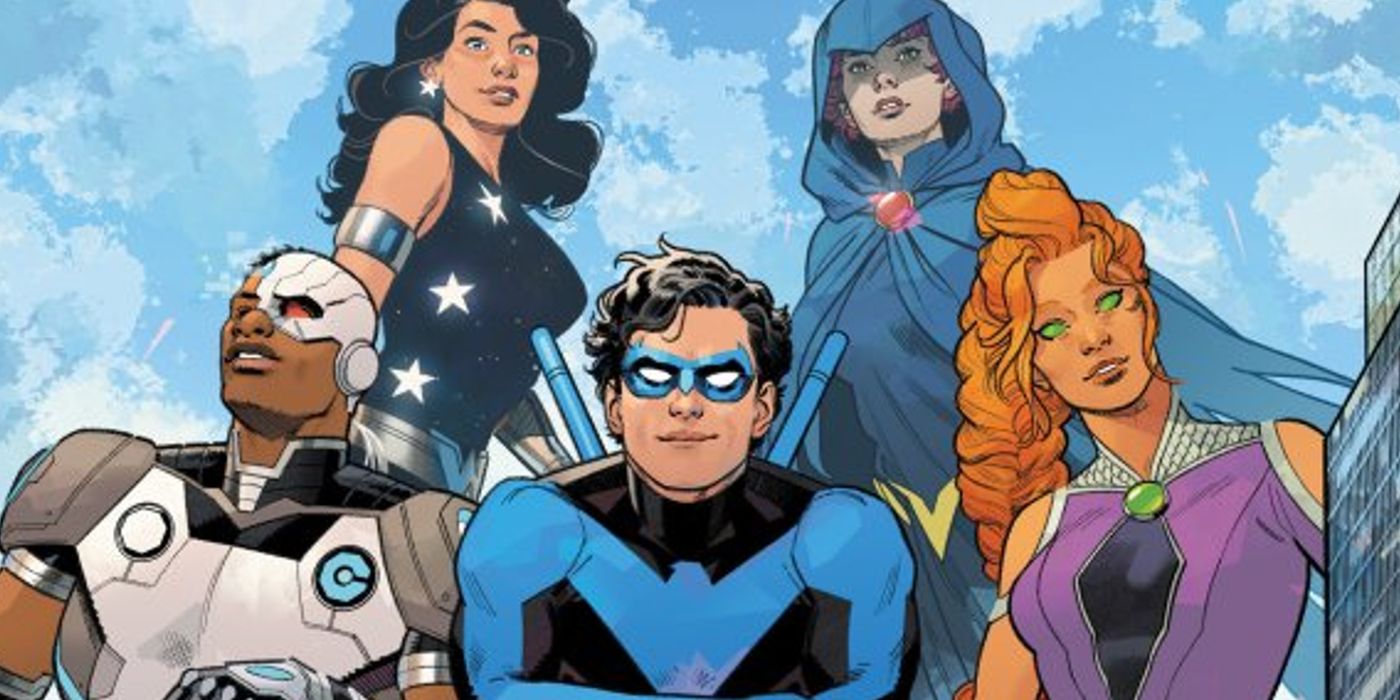Summary
- Nightwing has finally embraced his rightful place in the DC Universe, proving that he is not just a sidekick but a greater hero in his own right.
- Dick Grayson's history as Robin was a game-changer for Batman comics, connecting with younger audiences and helping Batman survive the Golden Age.
- Nightwing's character evolution, from Robin to leader of the Teen Titans to becoming Nightwing, has made him a more dynamic and vital character than Batman, with the potential to surpass his mentor.
Nightwing has long been important to DC history, but he's reached a new level in recent years. Nightwing was defined for ages by his relationships with other characters or as a member of teams like the Teen Titans and the Titans, but lately, he's finally gotten to take his proper place in the greater DC Universe. Dick Grayson has always been a leader, but he's never been on the level of the Trinity. That changed when he saved the Multiverse from Deathstroke in Dark Crisis On Infinite Earths, and the Titans were put in charge of defending the Earth.
Nightwing was long looked at as lesser than his mentor Batman, but that's an incorrect way of viewing his pupil. Nightwing has not only stepped out of Batman's shadow ages ago, he's been a greater hero for a while. Nightwing has deserved a more lofty position in the DC superhero hierarchy for a long time now.
The OG Sidekick Comes Into His Own
Dick Grayson's history as a character stretches back to 1940. Dick Grayson's first appearance as Robin was a total game-changer and cemented his importance in the history of superhero comics. Robin added something to the Batman comics that was missing before. Some argue that Robin took the edge out of those early Batman comics, which is a pretty accurate statement. However, the popularity of the character is undeniable. Bringing Robin into the Batman comics allowed the character to connect with younger audiences more. As the more obviously pulp-inspired heroes of the Golden Age went the way of the dodo, Batman stayed around because the kids loved him and the kids loved him because of Robin.
Robin was the touchstone character for Batman comics for years. As the adults who read pulp detective comics moved on to novels, anthology magazines, and radio shows, the kids still bought the comics and Batman survived the Golden Age. Dick Grayson's importance to Batman's continued existence, even back in the old days when he was the most cliché character imaginable, can't be understated. Grayson's role in the Batman comics stayed the same for decades — he was the audience insert. Decades before self-insert OCs became all the rage in fan fiction, and eventually moved into mainstream comics, Robin was there letting readers feel like they could hang out with Batman, that they could swing through Gotham City. The entire generation of sidekicks that Robin birthed played the same role, and soon the Teen Titans were born.
The Teen Titans were the first time the sidekicks of the DC Universe got to be on their own, and it coincided with the rise of youth culture in the US. The title ran bi-monthly from 1966 to 1973, went on hiatus for three years, and ran from 1976 to 1978. Meanwhile, Earth-2's Robin was shown as an adult, having aged more or less in real-time since his 1940 debut, and ended up joining the Justice Society and taking over for Batman when the Earth-2 Caped Crusader was killed. This period was an interesting time for Dick Grayson because it showed two different stages in his life — the forever sidekick and the adult Robin.
Of course, the most important change in the character's history was on the horizon as the 1980s dawned and that was the debut of New Teen Titans. Marv Wolfman, who had worked on the last Teen Titans series, teamed up with the late great George Pérez to reinvigorate the sidekicks of Earth-1 New Teen Titans is a watershed moment in late Bronze Age DC history. The DC Explosion, where the publisher expanded its publishing line like never before, happened in 1978 and its failure, sardonically known as the DC Implosion, put the company in jeopardy just as Superman: The Movie was hitting it big. The 1980 premiere of New Teen Titans gave DC hope and a book that could vie with undisputed sales champ Uncanny X-Men. Dick Grayson would play a huge role in this.
The Birth Of Nightwing
Robin's time leading the New Teen Titans was a revelation to a generation of fans who had grown up with the character in the comics and the '60s Batman TV show. This was a very different Dick Grayson, an independent hero who was a great leader and respected by his peers. The New Teen Titans faced off against Trigon, Brother Blood, the H.I.V.E., Deathstroke, and more, with Robin's leadership bringing them through. In fact, Dick Grayson actually got to lead a team before Batman did. Back in those halcyon days, Batman wasn't DC's most popular character — that was Superman — and the idea of the Bat Family was in its infancy. Batman hadn't led the Justice League yet, and the Outsiders were still several years away. However, Dick Grayson had already been leading a team for years before Batman ever did anything but follow Superman's lead.
The birth of Nightwing was the next big milestone, and it's the one that led the character to the next level. Nightwing learned a lot from Batman, but he was also just as close to Superman. Many younger fans don't realize what the name Nightwing means — it's the name of Superman's costume vigilante identity the Man of Steel used in the bottle city of Kandor. Dick Grayson choosing that name was both paying homage to his other mentor and moving out from the shadow of Batman. However, all of this was still happening pre-Crisis, before the DC Multiverse died and Frank Miller came in and made Batman much darker. Nightwing and Batman weren't the polar opposites in attitudes that they are today. When the Crisis did strike and the DC Universe was born, Batman and Nightwing changed forever.
Better Than Batman?
For people who haven't read pre-Crisis Batman comics, it's hard to describe the difference between iterations of the characters. While Frank Miller didn't invent a darker, more mature Batman — that stretched back to Bill Finger and Bob Kane, was taken up in the 1960s by Denny O'Neil and Neal Adams, and would return in the 1970s with the works of the superstar duo of Steve Englehart and Marshall Rogers — but The Dark Knight Returns and Year One brought that version of the character roaring back. DC history was changed so that this was always Batman, retconning those old happy-go-lucky Batman stories and making him into the dark, brooding, and deeply unpleasant Batman of Frank Miller. Nightwing suddenly became the opposite of that, and that was the way it was. Batman taught Nightwing everything, but Nightwing refused to become a younger Batman. Nightwing would always be that kid from the circus who wanted justice, not revenge.
This is when Nightwing as a character pulled ahead of Batman. This new dark Batman wasn't a character that could grow, not really, and the nature of comics meant that Batman was always going back to the dark status quo no matter what anyone did with him as a character. Nightwing, on the other hand, was more of an open book. Nightwing was an icon, but he wasn't Icon, and that gave creators freedom to build the character into something new. This made reading Nightwing's adventures in books like New Teen Titans, or as it was later called New Titans, more exciting for readers. Nightwing was a work in progress, despite being older than some of the creators who were writing and drawing his books. Batman was static; Nightwing was vital. Dick Grayson would get his first chance on the biggest stage after Bruce Wayne's return, taking over as Batman for a short time.
This was the beginning of Nightwing being a character that was actually better than Batman. Nightwing got his first solo miniseries in 1995, with writer Denny O'Neil and artist Greg Land onboard, and the success of that book, coupled with New Titans running out of steam, would see the Nightwing ongoing launched by writer Chuck Dixon and artist Scott McDaniel. Nightwing would show the titular taking responsibility for his own city and doing everything Batman did without the resources. Dixon and McDaniels built a rogues gallery, led by the second Blockbuster, brother of the dead original who was as crafty as he was strong. Retcons established the Nightwing and Batgirl relationship around this time, but Nightwing was still secondary to the other Batman titles. This is because Dixon's writing started to have diminishing returns — a book that felt vital stagnated. Even Robin felt more important than Nightwing, as the end of the Teen Titans as an extant entity under Nightwing's control left him appearing only in Nightwing, whereas Tim Drake made appearances in his book and the Batman titles. This would continue throughout the '90s until the launch of Titans by Devin Grayson and Mark Buckingham, bringing the adult members of the Teen Titans back together.
Despite having a solo series and a team book, one that would morph into The Outsiders after Titans/Young Justice: Graduation Day, Nightwing's potential was lost. Early 2000s DC was under the control of people obsessed with the late Silver Age and Bronze Age, and they were more about remaking the DC Comics of their childhood than anything else. The build-up to Infinite Crisis was in full swing and Nightwing was worse than an afterthought. DC head honcho Dan DiDio was never a fan of the Silver Age sidekicks being grown-up, productive members of the DC Universe and argued that Nightwing should be killed in the event, as revealed in interviews done after the event and included in the Infinite Crisis first edition hardcover. Infinite Crisis writer Geoff Johns offered up a favorite of his — Conner Kent — and Nightwing was saved, playing a small but pivotal role in the endgame of Infinite Crisis.
It's impossible to call the period that extended from the late '90s to 2009 as the best time for Nightwing and his fans. Nightwing had started out with so much potential, but soon he just became something of a placeholder. His status quo was tired, and he was basically just a happier Batman, although his time as the leader of the Outsiders — a team he formed that he didn't have to care about like the Titans — was classic Batman. Writers had lost their way with Nightwing, but Final Crisis was about to change all of that, as Batman would be taken off the table and Dick Grayson would get another chance at being a star with DC's greatest writer at the helm — Grant Morrison.
The Bat And Beyond
The first act of Morrison's Batman run was all about canonizing everything. The second phase of their run seemed to be all about rebuilding Dick Grayson and making Damian Wayne important. Morrison is a writer that every fan hopes gets to write their favorite character. Grant Morrison is known for finding the best parts of a character and putting them upfront, which is what they did with Dick Grayson in Batman And Robin. Grayson's tenure as Batman saw writers like James Robinson and Scott Snyder also write Grayson's adventures as Batman, and they were a breath of fresh air. After years of dark, ponderous Batman, Dick Grayson's Batman was fun. The New 52 would wipe all of this away, but fans got to see just how different Dick was on the biggest stage of them all.
Nightwing in the New 52 was a good, but not great, book because it went back to the Nightwing well — happy Batman-lite adventures. DiDio struck again with Forever Evil, trying to kill off Nightwing, but that led to Grayson, a book where Dick was forced to work as a spy after everyone saw him die in the battle against the Crime Syndicate. Grayson combined the talents of Tom King, Tim Seeley, and Mikel Janin, teaming Dick up with a new Huntress and Midnighter. The book showed just how great Grayson could be in a new type of book and would lead into Seeley's stellar Rebirth Nightwing run with Javier Fernandez, which would kick off with a story called "Better Than Batman". Nightwing's adventures in Blüdhaven weren't just aping Dixon's rather simplistic fare but took Grayson to new places. Lapsed fans came back and everything seemed right in the world until Seeley left the book and DC couldn't keep a team onboard to save their lives. Then DiDio struck for a third time, and Nightwing was shot in the head by KGBeast in King's Batman run, partly earned by his great job on Grayson.
The Ric Grayson years were disastrous, despite great creators like Dan Jurgens and Chris Mooneyham on the book. If DiDio wanted to kill fan interest in Nightwing, this was how it was done. Ric was a new version of Dick created by brain trauma, and it could have been an interesting story, but it was never allowed to be because Ric was the most unpleasant character ever. Fans left and soon DiDio was gone as well, so DC remedied the situation by putting writer Tom Taylor and artist Bruno Redondo on Nightwing. Taylor and Redondo gave Nightwing his best status quo in ages, with Nightwing inheriting billions from Alfred and using it to make Blüdhaven a better place. Barbara Gordon joined the cast of the book and Taylor and Redondo gave readers a brilliant ride, one that combined kinetic artwork with deft character writing. Nightwing fans finally got a win and ever since things have been great.
The current Nightwing and Titans are finally playing on what Nightwing should have been for years now. From the time of Chuck Dixon onward to Grant Morrison, Nightwing was basically just a Batman book without the gadgets, basically ignoring everything that made the character unique. Dixon was a remarkably limited writer and too many creators tried to take his approach. Morrison changed that, but the New 52 would basically go back to the Dixon well. Grayson showed that the character was multi-faceted and led to an awesome Nightwing run. The Ric Grayson years could have been completely disastrous, but fans loved Nightwing enough to come back when it was over. Since then, Nightwing has been the best pure superhero book around. The glory of it is that it shows that a hero doesn't have to be Batman to make a difference. Nightwing uses his money as much to help Blüdhaven as he does to fight crime. Nightwing has finally taken a leadership role in a way that Batman doesn't, showing that building relationships with others and treating everyone with respect is better than the alternative. Nightwing isn't a perfect character, but he's finally lived up to his potential.
Nightwing Is The Superior Batman
The history of Dick Grayson reveals a character who made a huge difference in Batman's mythos. Dick Grayson brought the sea change to Batman that allowed him to survive the Golden Age, and was the first in a long time of sidekicks. Dick Grayson then revolutionized the teen hero with Teen Titans and helped make DC a contender again with New Teen Titans. Grayson becoming Nightwing made the character into something very different, a character that could grow and change, which Batman could no longer do. His rise as a solo star was a great beginning but would pigeonhole him because of the limits of writer Chuck Dixon.
Three huge changes showed readers that Nightwing was better than Batman — his stint as Batman, Grayson and its follow-up Nightwing series, and Taylor and Redondo's turn on the book. DC has apparently embraced the fact that Nightwing is better than Batman. Nightwing shows its titular character doing everything Batman can't and Titans has him leading the biggest team in DC. Nightwing is going through a renaissance, but it's shown something that many fans have known for a long time — that Nightwing had long overtaken his mentor.

